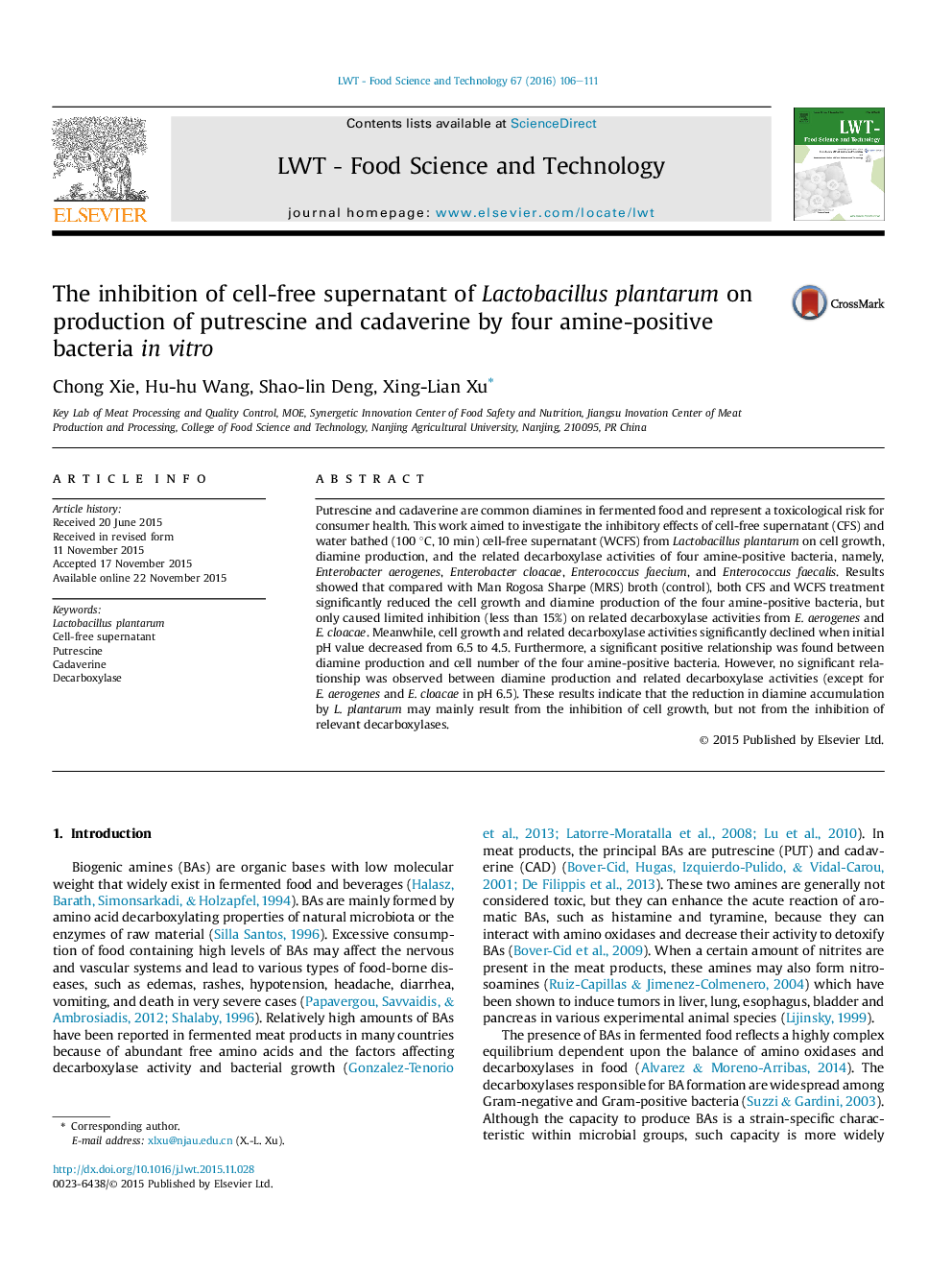| Article ID | Journal | Published Year | Pages | File Type |
|---|---|---|---|---|
| 4563817 | LWT - Food Science and Technology | 2016 | 6 Pages |
•CFS of L. plantarum reduced the growth and diamine production of amine-positive bacteria.•CFS of L. plantarum only caused limited inhibition on related decarboxylase activities.•Cell growth and decarboxylase activities significantly declined when pH value decreased.•L. plantarum reduce diamine production mainly due to inhibit the growth of amine-positive bacteria.
Putrescine and cadaverine are common diamines in fermented food and represent a toxicological risk for consumer health. This work aimed to investigate the inhibitory effects of cell-free supernatant (CFS) and water bathed (100 °C, 10 min) cell-free supernatant (WCFS) from Lactobacillus plantarum on cell growth, diamine production, and the related decarboxylase activities of four amine-positive bacteria, namely, Enterobacter aerogenes, Enterobacter cloacae, Enterococcus faecium, and Enterococcus faecalis. Results showed that compared with Man Rogosa Sharpe (MRS) broth (control), both CFS and WCFS treatment significantly reduced the cell growth and diamine production of the four amine-positive bacteria, but only caused limited inhibition (less than 15%) on related decarboxylase activities from E. aerogenes and E. cloacae. Meanwhile, cell growth and related decarboxylase activities significantly declined when initial pH value decreased from 6.5 to 4.5. Furthermore, a significant positive relationship was found between diamine production and cell number of the four amine-positive bacteria. However, no significant relationship was observed between diamine production and related decarboxylase activities (except for E. aerogenes and E. cloacae in pH 6.5). These results indicate that the reduction in diamine accumulation by L. plantarum may mainly result from the inhibition of cell growth, but not from the inhibition of relevant decarboxylases.
